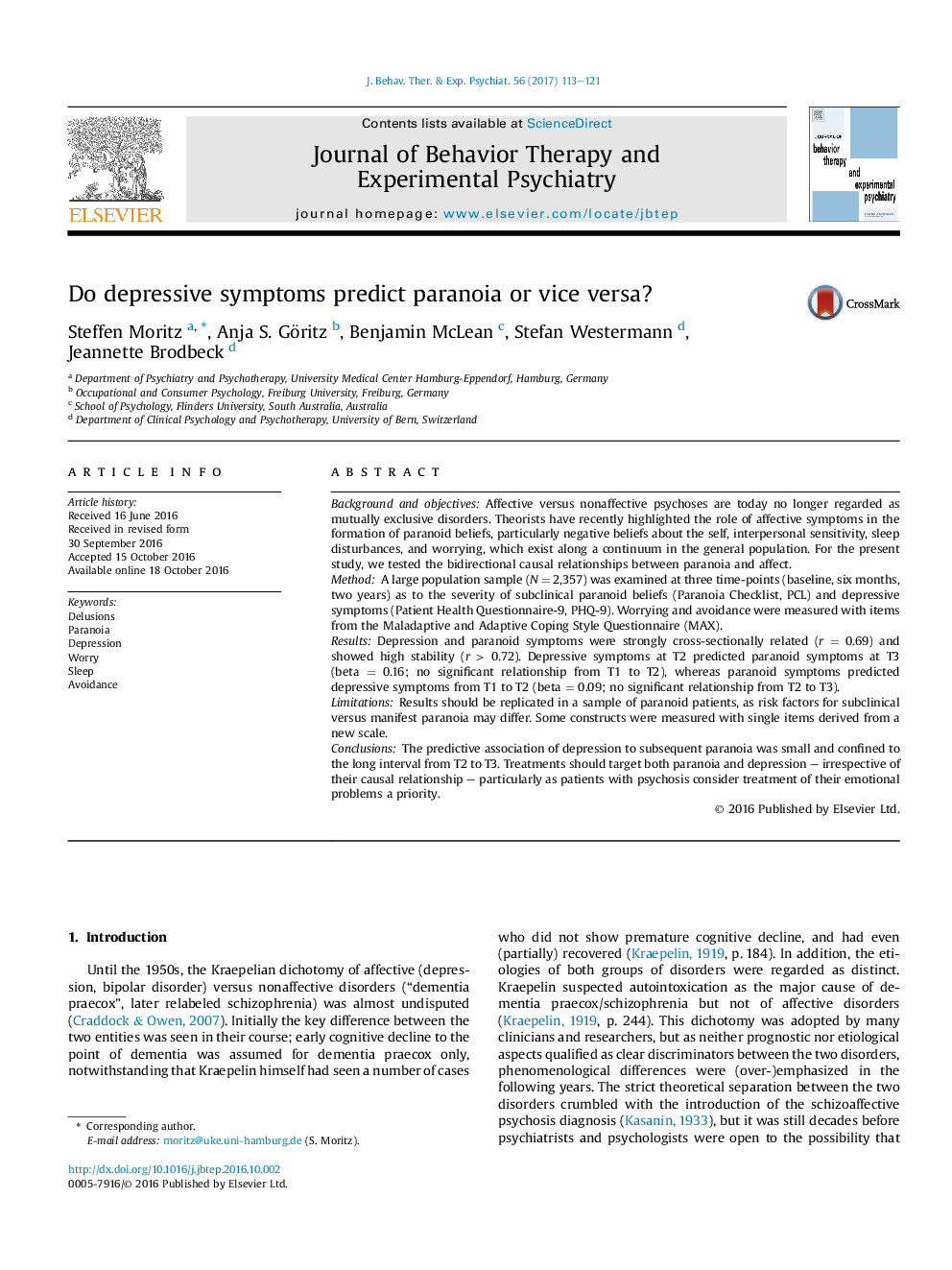| کد مقاله | کد نشریه | سال انتشار | مقاله انگلیسی | نسخه تمام متن |
|---|---|---|---|---|
| 5038992 | 1473060 | 2017 | 9 صفحه PDF | دانلود رایگان |
- Single affective symptoms are implicated in the pathogenesis of paranoia.
- Paranoia and depression were tested at three points in time in a population sample.
- Depression at T2 predicted paranoia at T3.
- The predictive association of depression with paranoia was small.
Background and objectivesAffective versus nonaffective psychoses are today no longer regarded as mutually exclusive disorders. Theorists have recently highlighted the role of affective symptoms in the formation of paranoid beliefs, particularly negative beliefs about the self, interpersonal sensitivity, sleep disturbances, and worrying, which exist along a continuum in the general population. For the present study, we tested the bidirectional causal relationships between paranoia and affect.MethodA large population sample (N = 2,357) was examined at three time-points (baseline, six months, two years) as to the severity of subclinical paranoid beliefs (Paranoia Checklist, PCL) and depressive symptoms (Patient Health Questionnaire-9, PHQ-9). Worrying and avoidance were measured with items from the Maladaptive and Adaptive Coping Style Questionnaire (MAX).ResultsDepression and paranoid symptoms were strongly cross-sectionally related (r = 0.69) and showed high stability (r > 0.72). Depressive symptoms at T2 predicted paranoid symptoms at T3 (beta = 0.16; no significant relationship from T1 to T2), whereas paranoid symptoms predicted depressive symptoms from T1 to T2 (beta = 0.09; no significant relationship from T2 to T3).LimitationsResults should be replicated in a sample of paranoid patients, as risk factors for subclinical versus manifest paranoia may differ. Some constructs were measured with single items derived from a new scale.ConclusionsThe predictive association of depression to subsequent paranoia was small and confined to the long interval from T2 to T3. Treatments should target both paranoia and depression - irrespective of their causal relationship - particularly as patients with psychosis consider treatment of their emotional problems a priority.
Journal: Journal of Behavior Therapy and Experimental Psychiatry - Volume 56, September 2017, Pages 113-121
